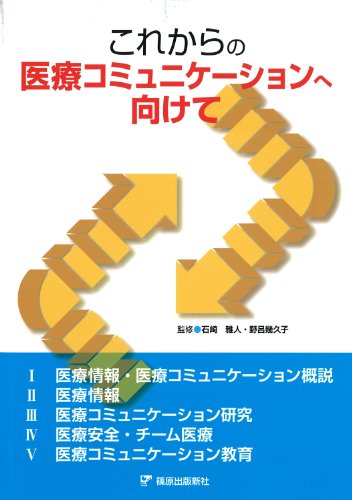10 0 0 0 OA 会話コミュニケーションによる相互信頼感形成の共関心モデル
- 著者
- 片桐 恭弘 石崎 雅人 伝 康晴 高梨 克也 榎本 美香 岡田 将吾
- 出版者
- 日本認知科学会
- 雑誌
- 認知科学 (ISSN:13417924)
- 巻号頁・発行日
- vol.22, no.1, pp.97-109, 2015-03-01 (Released:2015-09-15)
- 参考文献数
- 20
- 被引用文献数
- 3
Conversational interactions contribute not only to the sharing of information and establishment of consensus but also to the construction and sustenance of mutual trustamong conversational participants in our daily lives. The interrelationship betweentrust and conversational interactions has not been studied extensively in cognitive sci-ence. One reason for this lack of research is the fact that a study of social emotions suchas trust requires real fields, since social emotions in their natural, non-artificial formsare not readily observable in laboratory settings. We introduce a notion of concernalignment to describe the surface conversational processes toward mutual trust forma-tion. Focusing on medical communications as our research field, we collected healthguidance conversations between nurses and patients who were diagnosed as havingmetabolic syndrome, and we provide a qualitative analysis of the structure of conver-sations in terms of a set of dialogue acts we propose for the description of concernalignment processes. We demonstrate that the idea of concern alignment enables us tocapture and elucidate both the local and the global structures of mutual trust formationin conversational consensus-building processes. We also discuss underlying mechanismsconnecting concern alignment and mutual trust.
2 0 0 0 日本語地図課題対話コーパスの設計と特徴
- 著者
- 堀内 靖雄 中野 有紀子 小磯 花絵 石崎 雅人 鈴木 浩之 岡田 美智男 仲 真紀子 土屋 俊 市川 熹
- 出版者
- 社団法人人工知能学会
- 雑誌
- 人工知能学会誌 (ISSN:09128085)
- 巻号頁・発行日
- vol.14, no.2, pp.261-272, 1999-03-01
- 被引用文献数
- 16
The Japanese Map Task Corpus was created between 1994 and 1998 and contains a collection of 23 hour digital recordings, digitized maps and orthographic transcriptions of 128 dialogues by 64 native Japanese speakers. Map task dialogues are dialogues participated in by two speakers, the instruction giver who has a map with a route and the instruction follower who has a map without a route. The giver verbally instructs the follower to draw a route on his map. The two maps are slightly different so that there may emerge a natural interaction in spite of the fact that the flow of information internal to the task is basically one way. The principle and design of the recordings are described with special reference to the augmentations and improvements to the original HCRC Map Task corpus. Annotations to the orthographic transcriptions are viewed as "tags" that provide the start and end times of utterances, the duration of pauses, non-verbal events and synchronization of overlapping utterances, in a format which provides a view to giving a basis for further tagging in terms of linguistic and discourse phenomena in a interchangeable and sharable manner. Discourse and linguistic phenomena peculiar to spontaneous spoken dialogues, such as overlapping, are analyzed and the method of recording such phenomena in the transcription is discussed and proposed, with an implication for the requirement that one dialogue be represented in one digitized sound file for the preservation and reference of the information on timing. The tags emp1oyed in the corpus also provide an easy way of characterizing it in terms of the number and the duration of utteraI1ces and pauses. The statistical figures thus ob-tained are relatively independent of design factors like kinds of maps, but familiarity does significantly correlate with the duration and number of utterances.
2 0 0 0 対話構造の定量的評価
機械翻訳システムあるいは対話システムにおいてある発話を処理する場合、より適切な翻訳/処理結果などを得るためには、その発話が先行するどの発話と関係しているかを考慮することが必要となる。たとえば、ある応答発話「はいそうです」を英語に翻訳する場合、これに対応する先行発話であるyes-no疑問文を発見し、その発話に応じてその呼応関係を考慮して「Yes, I am.」、「Yes, it is.」あるいは「No, you can't.」といった結果を生成する必要がある。従来から対話構造(談話構造あるいは談話セグメント等とよばれている)に関する研究が行なわれている(たとえば[1])。また、このような構造に関して、対話コーパス中の対話について被験者によりセグメントを行ない、この結果を用いた定量的な研究が行なわれている。例えば、Litman & Passonneau[2]は、対話中の談話セグメント境界を発見するための性質とアルゴリズムについて研究している。また、Hirschberg, Nakatani & Grosz[3]は、談話セグメントと韻律情報の関係について研究している。我々は、対話中の発話間の関係(対話構造)を認識する方法を提案している。Litman & Passonneau[2]のアルゴリズムは、セグメント間の境界を発見するのに対して、我々の提案する方法では、対話構造を3階層からなる構造で認識するため構造間の関係を含めて捉えること可能となる。現在、この方法の正当性、有効性あるいは問題点を調査するために、対話コーパスを用いた定量的な評価を行なっている。本稿では、この対話構造に関する定量的評価のための予備調査の結果と照応・省略と対話構造の定量的な関係について報告する。
1 0 0 0 会話コミュニケーションによる相互信頼感形成の共関心モデル
- 著者
- 片桐 恭弘 石崎 雅人 伝 康晴 高梨 克也 榎本 美香 岡田 将吾
- 出版者
- 日本認知科学会
- 雑誌
- 認知科学 (ISSN:13417924)
- 巻号頁・発行日
- vol.22, no.1, pp.97-109, 2015
Conversational interactions contribute not only to the sharing of information and <br>establishment of consensus but also to the construction and sustenance of mutual trust<br>among conversational participants in our daily lives. The interrelationship between<br>trust and conversational interactions has not been studied extensively in cognitive sci-<br>ence. One reason for this lack of research is the fact that a study of social emotions such<br>as trust requires real fields, since social emotions in their natural, non-artificial forms<br>are not readily observable in laboratory settings. We introduce a notion of concern<br>alignment to describe the surface conversational processes toward mutual trust forma-<br>tion. Focusing on medical communications as our research field, we collected health<br>guidance conversations between nurses and patients who were diagnosed as having<br>metabolic syndrome, and we provide a qualitative analysis of the structure of conver-<br>sations in terms of a set of dialogue acts we propose for the description of concern<br>alignment processes. We demonstrate that the idea of concern alignment enables us to<br>capture and elucidate both the local and the global structures of mutual trust formation<br>in conversational consensus-building processes. We also discuss underlying mechanisms<br>connecting concern alignment and mutual trust.
1 0 0 0 OA 医療コミュニケーションにおける共同意思決定過程の解明
1 0 0 0 相互行為分析のための単位に関する検討
- 著者
- 榎本 美香 石崎 雅人 小磯 花絵 伝 康晴 水上 悦雄 矢野 博之
- 出版者
- 一般社団法人電子情報通信学会
- 雑誌
- 電子情報通信学会技術研究報告. HCS, ヒューマンコミュニケーション基礎 (ISSN:09135685)
- 巻号頁・発行日
- vol.104, no.445, pp.45-50, 2004-11-11
- 参考文献数
- 10
- 被引用文献数
- 1
本稿では,会話相互行為の実証的な分析にふさわしい単位について考察するために,これまでに提案されているいくつかの単位間の比較を行う.比較する分析単位として間休止単位・韻律単位・節単位・スラッシュ単位・ターン構成単位を取り上げる.まず,各単位の判定基準に基づき,共通データ(3人会話)の単位区切りを行う.次に,ターン構成単位を軸としてその他の単位との境界の一致傾向を調べる.また,数量化II類を用いてターン構成単位の境界の有無をその他の単位から予測するモデルを構成し,ターン構成単位へのそれぞれの単位の影響について検討する.分析の結果,ターン構成単位との一致が強いのは節単位・スラッシュ単位であり,予測モデルに大きな影響を与えるのは節単位と一部の韻律単位であることを示す.
1 0 0 0 音声対話コーパスの共有化へ向けて
- 著者
- 土屋 俊 堀内 靖雄 石崎 雅人 前川 喜久雄
- 出版者
- 社団法人人工知能学会
- 雑誌
- 人工知能学会誌 (ISSN:09128085)
- 巻号頁・発行日
- vol.14, no.2, pp.231-242, 1999-03-01
- 被引用文献数
- 5
1 0 0 0 これからの医療コミュニケーションへ向けて
- 著者
- 石崎雅人 野呂幾久子監修
- 出版者
- 篠原出版新社
- 巻号頁・発行日
- 2013
